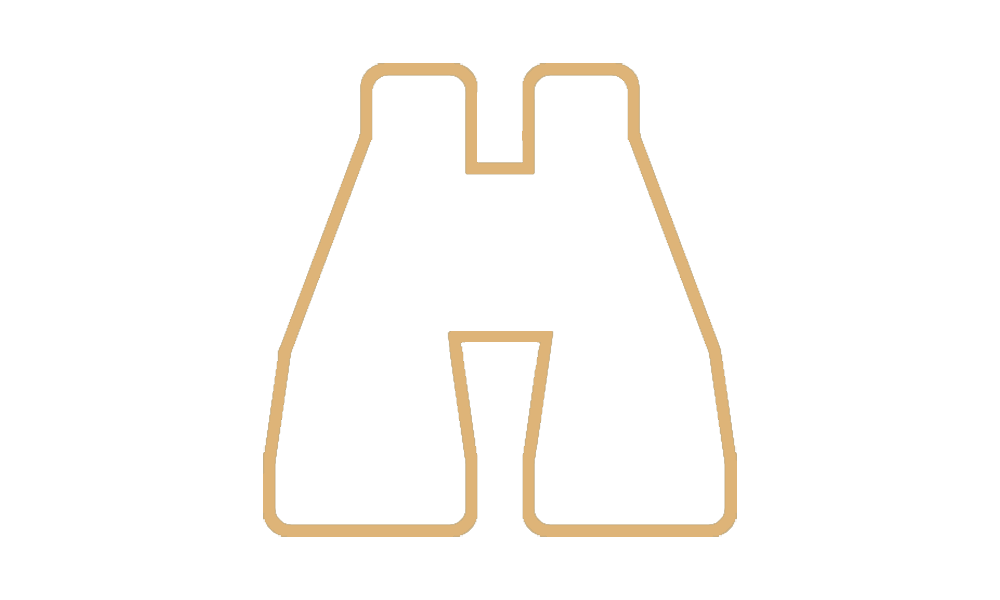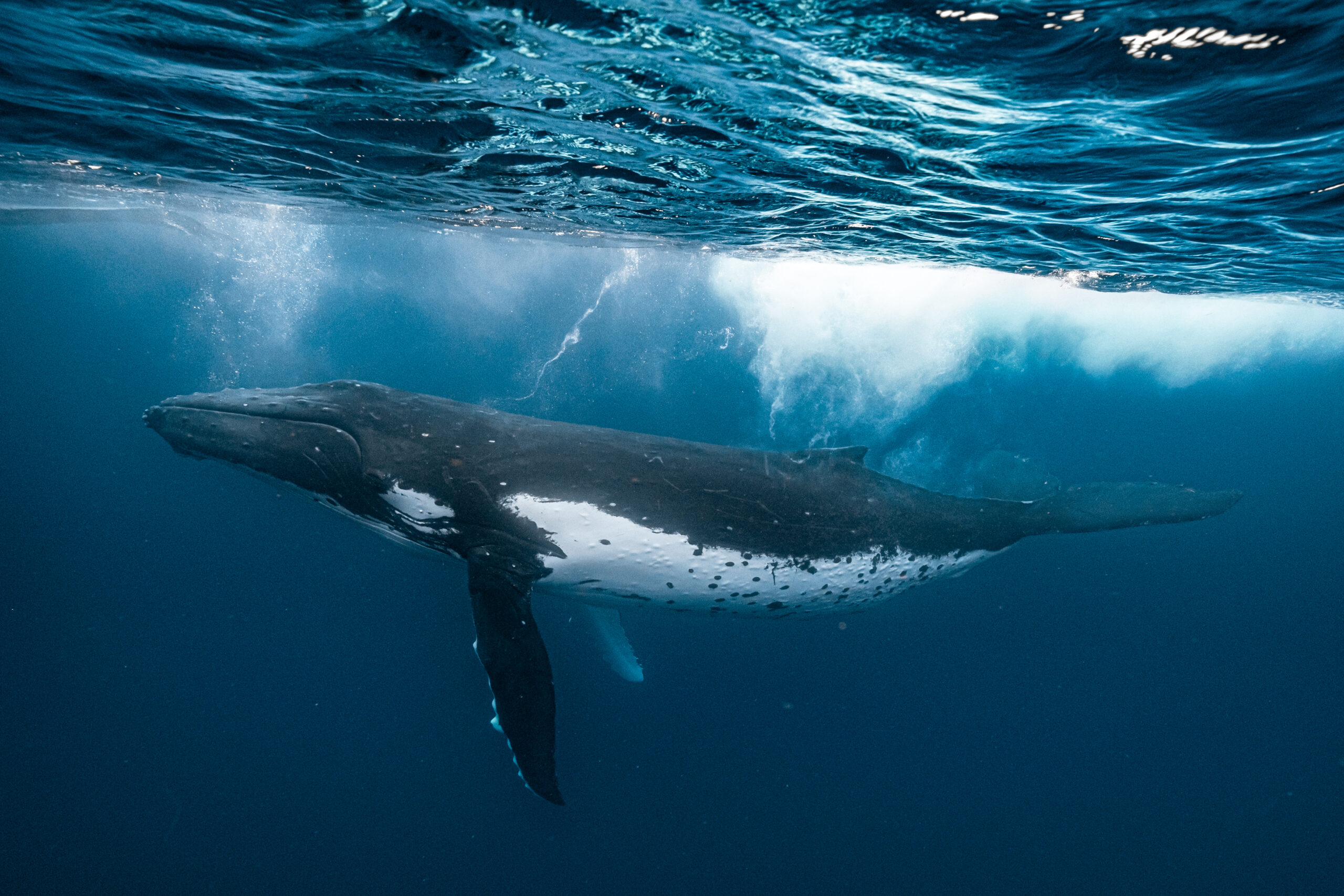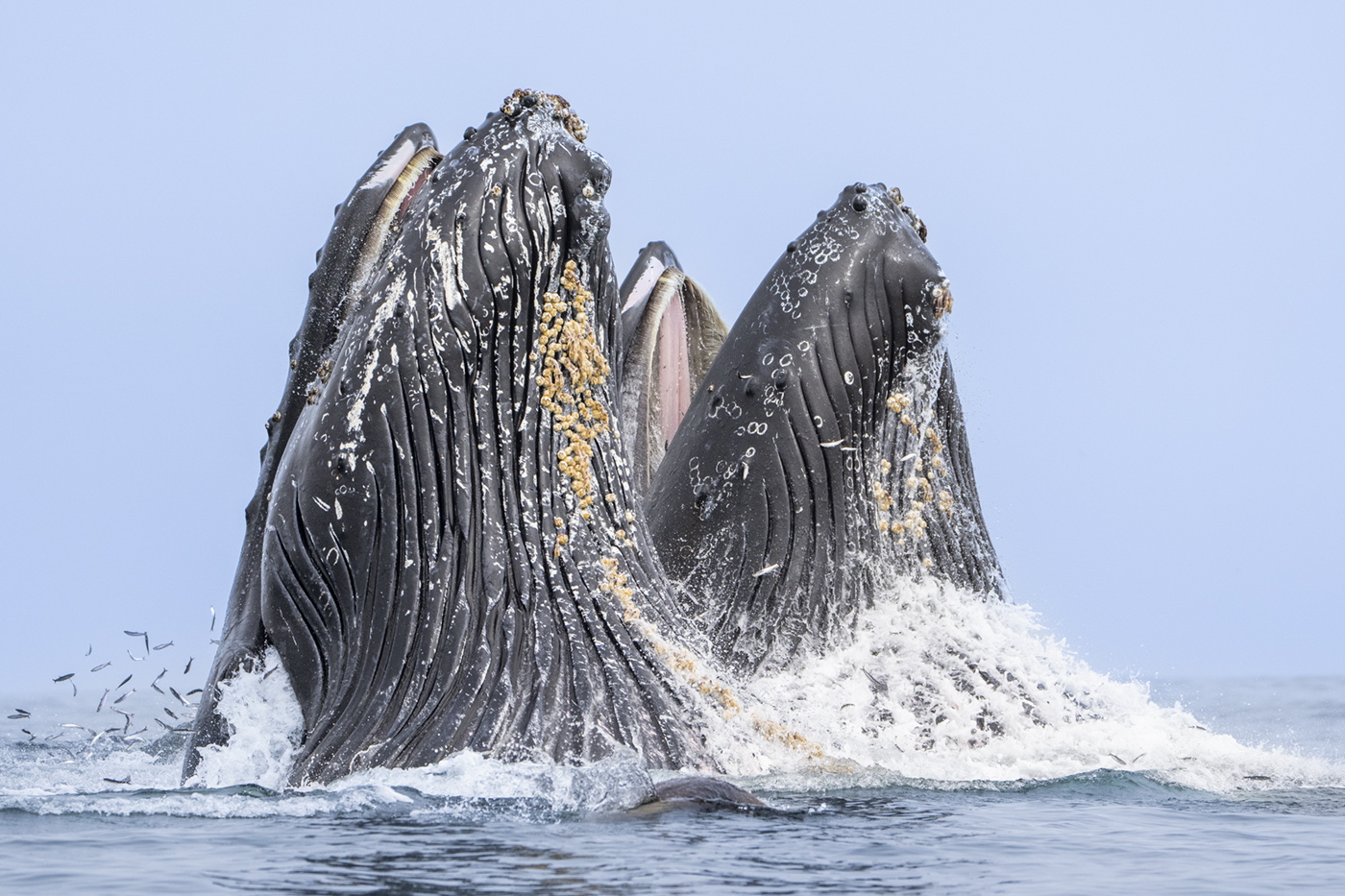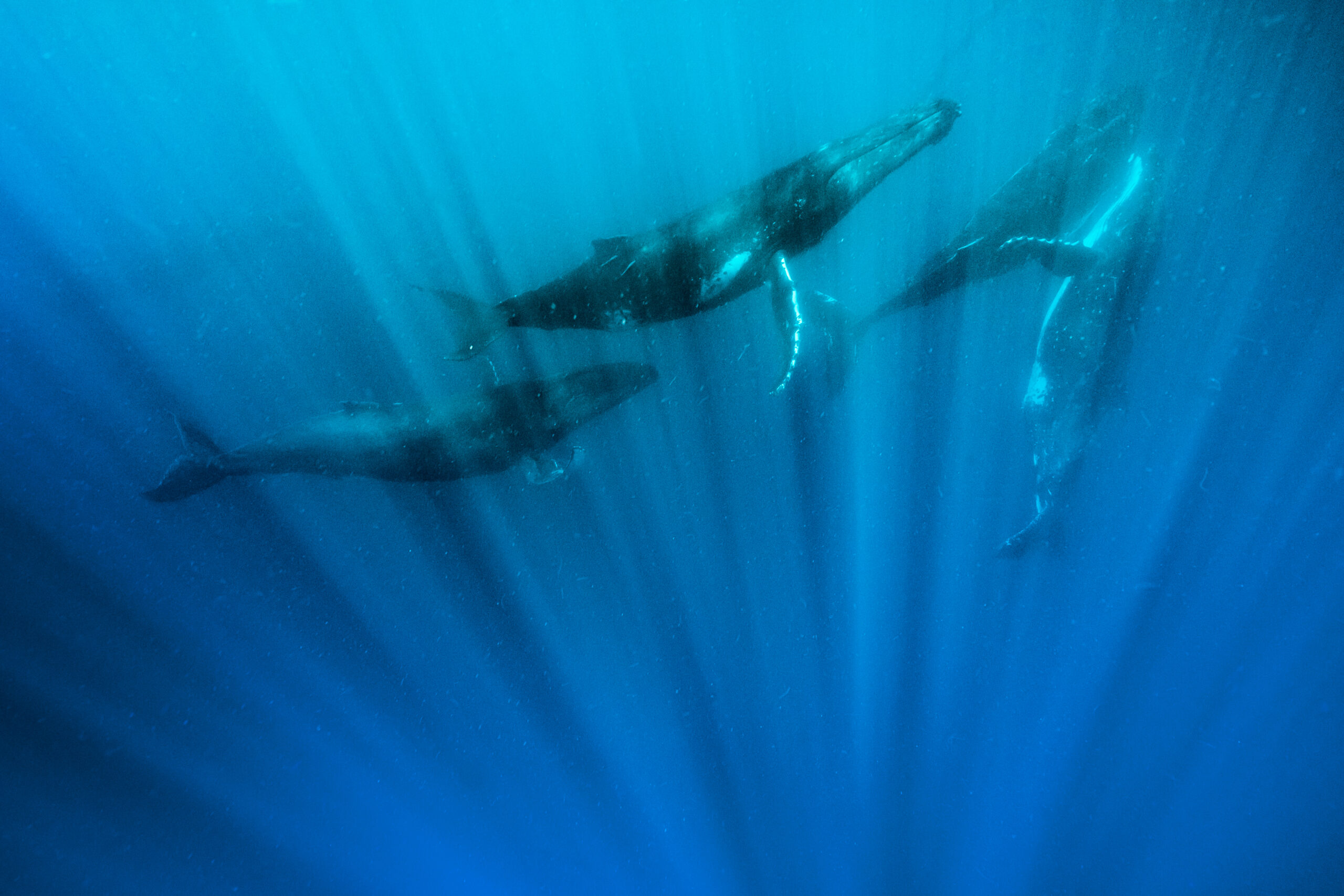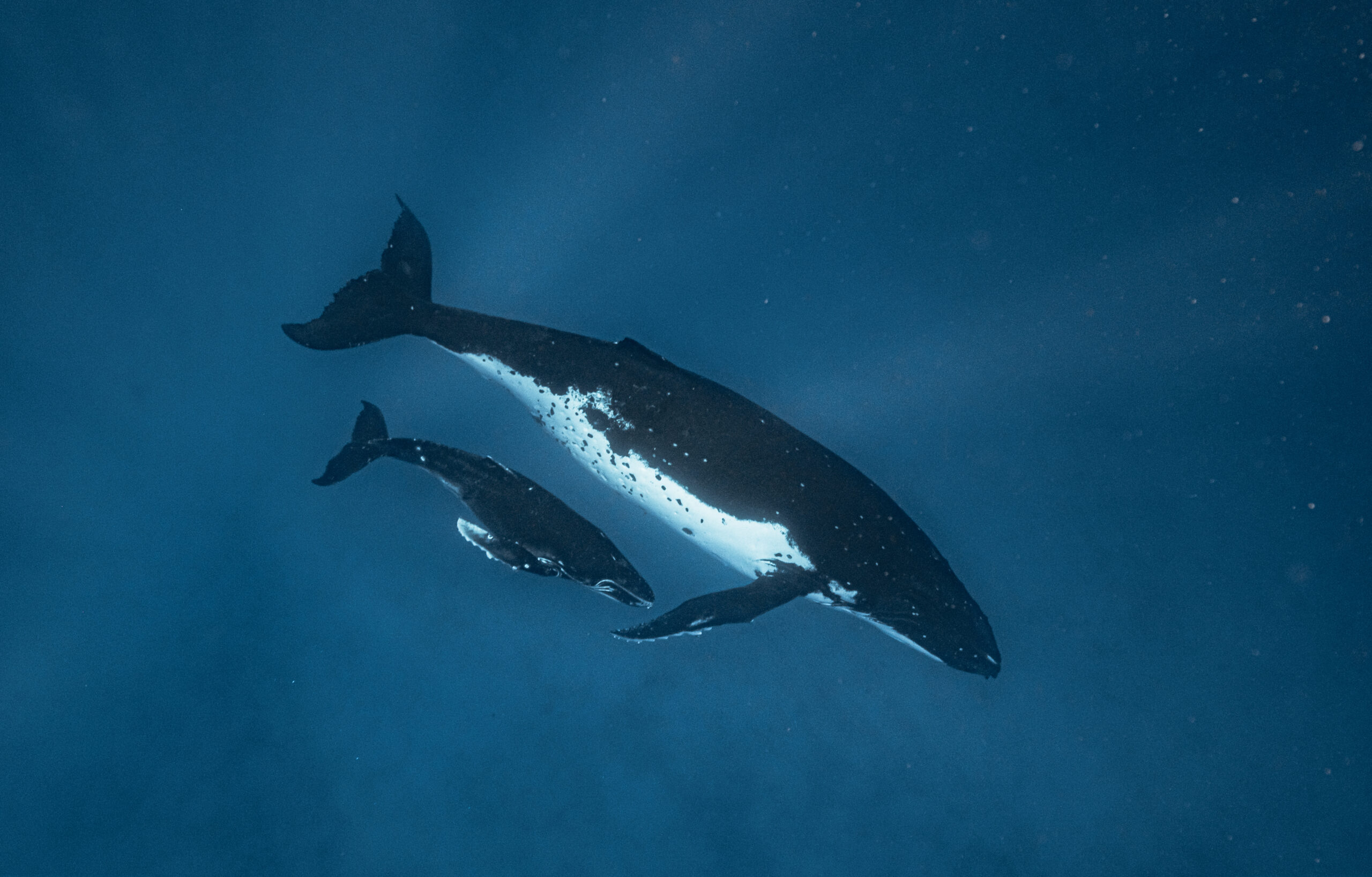Humpback Whale
HUMPBACK WHALE (Megaptera novaeangliae)
The humpback whale is iconic, made famous by its beautiful songs and spectacular surface breaching. The original whale conservation movement focused its attention on this species of whale and has been a resounding success; today humpback whale numbers have bounced back to pre-whaling numbers. These whales can be identified by their large pectoral fins, and their unique tubercles (bumps) on their head and leading flipper edge. They exhibit a unique feeding strategy called bubble-net feeding, in which they trap baitfish by blowing bubble rings under water, encircling the prey, a phenomenon to behold!
Difficulty: Easy
Humpback Whale Tour Statistics
1 HUMPBACK
TOUR RUN
9 AVG NUMBER OF WHALES SEEN PER TOUR
30 MINUTES ON AVG
WITH EACH WHALE
Humpback Whale Description
The humpback whale is the world's six largest whale, measuring around fifty feet (15m) in length, and weighing around forty tons. They are rorqual whales, characterized by the long folds of skin running from below the mouth to the navel. This adaptation allows humpback whales to greatly expand their mouth when feeding. Their large for-bodies taper quickly starting at their navel. In proportion to their body size they have the largest pectoral flippers, each about a third of the total body length. A humpback whale's head, leading front flipper edge, and tip of their tails are covered with tubercles, bumps that probably help with sensing their environment, as they are full of nerves. Skin coloration for humpbacks varies between the northern and southern hemisphere populations. In the north, the whales are almost entirely dark in coloration, with flippers and minimal parts of the belly being white. In the southern hemisphere humpbacks show much more white along their underside, this includes the animals we tend to see on our Humpback Whales of Tonga photo tour.
This adult female southern humpback whale exemplifies the typical coloration for this E2 population of whales. They have a lot more white on their underside, compared to humpback whales, say from Monterey Bay in California.
Humpback Whale Distribution and Habitat
Humpback Whales are found across the world's oceans, with the exception of the waters at the equator and the extreme polar caps. They are coastal whales, tending to be in waters over the continental shelf. In some areas, they can easily be seen from shore. Humpback whales do migrate across the open ocean to go between their feeding grounds, to their breeding and mating grounds. This migration can be extensive, and some individuals have been recorded traveling up to eight-thousand miles in one direction. For our Humpback whales of Tonga tour, we see the E2 stock subpopulation, which feed in the nutrient rich waters in the Ross Sea and in the waters off of the Antarctic Peninsula from spring to the fall. They then travel to the warm waters off of, and within the Tongan islands, to give birth, and mate in the southern hemisphere's winter. They are in this area only between July and October which is why we time our tour for late August, to maximize the number of whales and unique encounters.
Humpback whales are generally found near coasts, sometimes within sight of the shore. It is not impossible for us to see and swim with a whale right from the hotel's pier!
Humpback Whale Feeding Biology
Humpback whales have a specific feeding season, which is from spring to autumn. The whales predate on a variety of prey, including krill and small fish. Humpback whales engage in gulp feeding, opening their mouth to engulf large quantities of water and prey. The water filters out of their mouth through the baleen, while the prey gets trapped by the keratinaceous baleen. In Antarctica, where the whales we see in Tonga migrate to, feed mostly on Antarctic krill. To hunt their prey, a single whale, or multiple whales will exhale underwater through their blowhole, while swimming in a circle. This creates a ring of bubbles floating up to the surface. The bubble ring creates a net of air, confusing and forcing the prey to squeeze together into a baitball. The humpback whales then swim through the interior part of the bubble ring, open their mouths and catch their prey. This can be done completely underwater, or as in most cases, culminating at the surface.
Humpback whales gulp feed, opening their mouths widely to engulf prey. Water seeps through the baleen, trapping prey along the way. This behavior can be seen on our upcoming Monterey Bay humpback whale photo tour, but cannot be seen in Tonga as the whales do not feed during the breeding months.
Humpback Whale Social Organization
Humpback whales are mostly seen in small groups that don't have a permanent structure, with specific groups only persisting for days or weeks at a time. To communicate, humpback whales breach (jumping out of the water), tail slap, chin slap, and flipper slap. Male humpback whales also sing, creating songs made up of multiple notes, which are often repeated in slight variation. The reason male humpbacks sing is unclear, though it could be to attract females, to establish dominance, or for a different reason. Males only sing during the breeding season so it could well have something to do with reproduction. Since our humpback whales of Tonga tour happens during the breeding season, there is a real chance you may hear singing while in the water, or better yet, feel it, as the sound waves hit your body.
Humpback whales are most often in loose groups. Here, males are chasing a female during a heat run, described below. The most likely grouping we are to see during out tour is a mother with her calf, and possibly one or more escort males.
Humpback Whale Reproduction
Humpback whales only mate and give birth during the winter months. In the southern hemisphere, they do so in July through October, which is why our tour happens during this time of year. We have the chance of seeing courting behavior, called a heat run, where a female is followed by many males, tiring them out in an effort to see who has the most stamina. Gestation is eleven and a half months long, with a single calf being born once every two years. Humpback whale calves weigh slightly less than a ton when born, and are around 13 feet (4 meters). The warm Tongan waters provide warmth for the baby while it is fattening up from mom's milk. Calves nurse for up to a year, but can start to eat solid foods at around six months old. We have had tours where people even swam through escaped humpback whale milk! The calves will stay with mom until just short of two years, become sexually mature at five to ten years, and can live over fifty years.
Since we are in Tonga during birthing season, we will definitely see humpback whale calves. They tend to be quite curious and will often approach to have a closer look!
